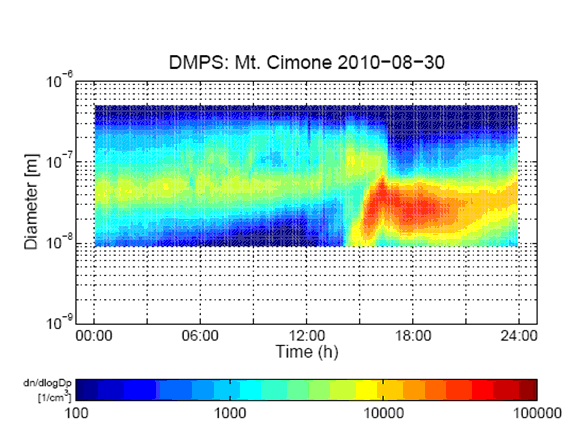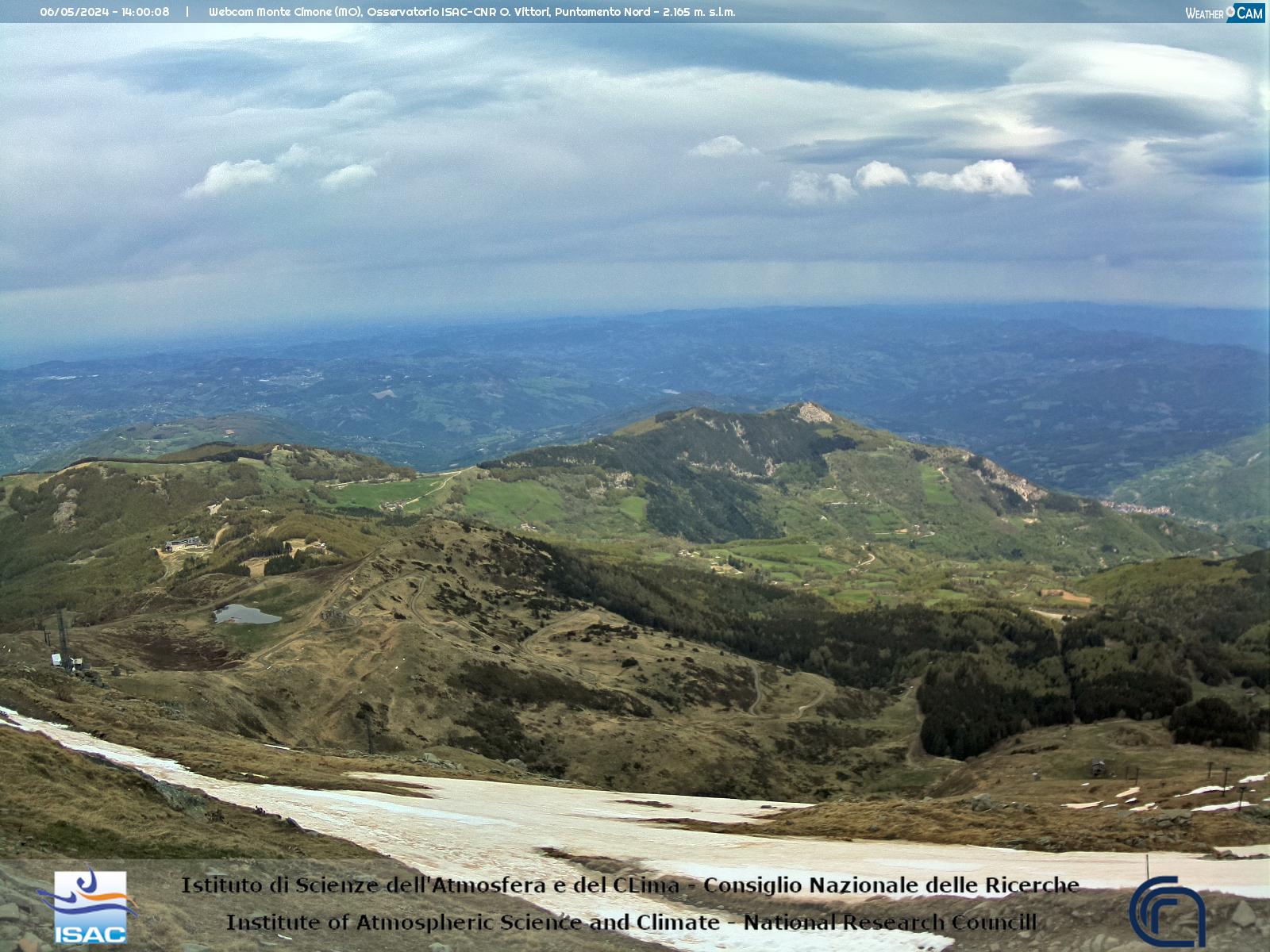Aerosol size distribution (10 nm – 500nm)
Starting date: 05-11-2005
Status: Running
Instrumentation and calibration: The Differential Mobility Particle Sizer (DMPS) was installed at ICO-OV in November 2005, in collaboration with Kuopio University (Finland). The system include a Differential Mobility Analyzer (DMA) to select a narrow particle size followed by a condensation particle counter (TSI model 3010) to count individual particles: by setting different voltages in the DMA, particles of different mobility are selected and their concentration are measured. The system was upgraded in 2008, following the recommendations of EUSAAR EU-project (Wiedensohler et al., 2011). The DMPS measures the aerosol size distribution from 10 nm to 500 nm. The system participated in the EUSAAR NA3 workshops, that took place in November 2006 and March 2008, where it was intercompared with similar systems and calibrated with 100 nm and 200 nm latex standard spheress
Project affiliation (s) Present: SHARE, GAW-WMO,EUSAAR,ACTRIS Past: VOTALP, STACCATO, MINATROC, OZOMONT, TOR-2
Related research programmes
- Investigation of the tropospheric background condition
- Monitoring of aerosol physical properties
- Polluted air-mass transport
- New particle formation
Why is this research important? Aerosol particles are ubiquitous in the atmosphere. They exert significant effects on the Earth’s climate. First, they absorb and scatter incoming solar radiation (direct radiative forcing). Second, they act as cloud condensation nuclei (CCN), influencing the cloud microphysical and optical properties as well as their life-time and precipitation (indirect effect). The number size distribution of atmospheric aerosol particles is a basic, but essential parameter required in calculations of the effects of aerosols on climate, human health, and eco-systems. It is also an important parameter with regard to the description of aerosol dynamical processes as well as heterogeneous chemical reactions in the atmosphere. In particular particle size distribution constrains: i. aerosol radiative forcing, as they directly relate to the optical properties of an aerosol population, ii. cloud forming capacity of an aerosol population, as they directly relate to the number of available cloud condensation nuclei (CCN), iii. the health impact of aerosols, as they provide useful information on the lung-penetrating fraction of the aerosol population. An accurate knowledge of long-term particle number and size variability is therefore clearly relevant to aerosol and climate sciences. In particular, very little information exists to date from high altitude remote sites. An important phenomenon associated with the atmospheric aerosol system is the formation of new atmospheric aerosol particles. Once formed, aerosol particles need to grow further to sizes >50-100 nm in diameter until they are able to influence climate, even though smaller particles may have influences on human health and atmospheric chemistry.
Quick look The seasonal aerosol number number distribution showed a behaviour typical for background conditions, characterized by highest values in summer (2430 ± 1198 cm-3) and lowest in winter (1050 ± 737 cm-3). Typical autumn-winter conditions are represented in Figure 1 (November 3rd 2010). During these seasons Monte Cimone observations are well representative of the free troposphere conditions, with very low particles concentration (<100 cm-3). On the other hand, during summertime, ICO-OV can be also affected by polluted air masses transport from the regional Planetary Boundary Layer (PBL). At the interface between clean air-masses from the free troposphere and polluted air-masses form low level, events of new particle formation can be observed. An example is shown in Figure 2, for August 30th 2010:relatively clean conditions were observed in the morning (~300 cm-3), while since 14:00 the accumulation (aged) particle increase indicated pollution transport from PBL. Following the air-mass mixing, a strong new particle formation event was evident since 15:00 (red in the colured scale). The averaged particle size distribution shows very clearly the presence of three aerosol modes: nucleation, Aitken and accumulation.

Figure 1. Aerosol size distribution variation during a typical winter day, with conditions representative of free troposphere.

Figure 2. Aerosol size distribution variation during a summertime day, with an intense event of new particle formation.
Organization (s): ISAC-CNR Via Gobetti 101, I-40129, Bologna www.isac.cnr.it
Contact persons: Dr. A. Marinoni e-mail: a.marinoni [at] isac.cnr.it, phone: +39 051 6399597
Where can I find the data? World Data Centre for Aerosol (WDCA) hosted at EBAS-NILU or by direct request to: a.marinoni [at] isac.cnr.it



